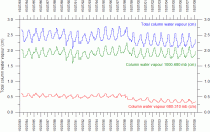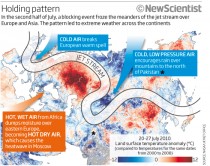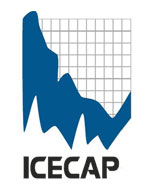"Before becoming an expert on climate change communication, Ed Maibach went through a change of his own.
Back in 2005, Maibach and his wife joined some family members on an educational walking trip through the Dolomites in Italy. Members of the trip spent the mornings listening to leading climate scientists from the Potsdam Institute for Climate Impact Research and the afternoons climbing mountains.
There, they became familiar with climate change basics. The dramatically rising level of CO2 in our atmosphere is rapidly destabilizing our climate. The world’s population - more than 6.5 billion people - is growing and modernizing rapidly, leading to greater use of fossil fuels and deforestation.
These events, in turn, accelerate climate destabilization and reduce the earth’s capacity to produce the food and fresh water needed to sustain the current human population, much less our rapidly expanding population of tomorrow. Soon, countless people around the world may lose access to the environmental conditions that sustain their existence.
“After listening to these lectures four mornings in a row, the epiphany struck,” says Maibach. “I finally made the connection between global warming and public health - “global warming is likely this century’s most profound threat to public health and well-being. When that epiphany struck, I realized exactly what I had to spend the rest of my life working on.”
In fall 2007, after joining Mason’s Department of Communication, Maibach founded the Center for Climate Change Communication and became its director.
The center is the first behavioral science research center in the United States dedicated solely to improving climate change public engagement methods.
Starting with the community he knew best, Maibach planned his first study, which was conducted in partnership with the Environmental Defense Fund, to be a national survey of public health department directors.
The research team was surprised to find that nearly 60 percent of local public health department directors nationwide reported that they were already seeing harmful health effects of climate change in their jurisdictions, yet few felt they had the capacity to respond.
In 2008, Maibach and a colleague at American University won a prestigious Health Policy Investigator Award from the Robert Wood Johnson Foundation. This award funds their research intended to help health professionals more effectively communicate the health implications of climate change.
More recently, several of the center’s researchers were awarded a Climate Change Education Grant from the National Science Foundation to study the role TV meteorologists can play in educating the public on the local effects of climate change.
Center researchers have been actively sharing the fruits of their labor. Numerous organizations - from the local to the global - have sought their guidance, including Virginia state and local governments, environmental organizations, nongovernmental organizations, federal agencies and even foreign embassies.
Last fall, Maibach was invited to Hollywood to brief several dozen writers, directors and producers on how to engage their audiences more effectively on climate change.”
(No doubt a certain James Cameron would have been there....)
Let’s look at the survey
Out of 2,296 members of the National Association of County & City Health Officials, they produced a sample size of 217, who were contacted. The responses were:
Take a running jump = 38
Refused to answer calls or e-mails = 46
This left 133, of whom 81, (61%), believed their jurisdiction had seen the effects of climate change in the last 20 years.
So the actual figure of 3.5% of 2,296 local public health department directors becomes “nearly sixty percent of local public health department directors nationwide.”
Yep, he’s made the connection alright, that’s a great way to communicate dodgy science and spin the results.
Oops, I forgot, you paid for it.
“The Climate Change Education Partnership (CCEP) program seeks to establish a coordinated national network of regionally- or thematically-based partnerships devoted to increasing the adoption of effective, high quality educational programs and resources related to the science of climate change and its impacts.
Each CCEP is required to be of a large enough scale that they will have catalytic or transformative impact that cannot be achieved through other core NSF program awards. The CCEP program is one facet of a larger NSF collection of awards related to Climate Change Education (CCE) that has two goals:
(1) preparing a new generation of climate scientists, engineers, and technicians equipped to provide innovative and creative approaches to understanding global climate change and to mitigate its impact; and,
(2) preparing today’s U.S. citizens to understand global climate change and its implications in ways that can lead to informed, evidence-based responses and solutions.”
See more here.
Anna Petherick, Nature
With high Andean peaks and a humid tropical forest, Bolivia is a country of ecological extremes. But during the Southern Hemisphere’s recent winter, unusually low temperatures in part of the country’s tropical region hit freshwater species hard, killing an estimated 6 million fish and thousands of alligators, turtles and river dolphins.
Scientists who have visited the affected rivers say the event is the biggest ecological disaster Bolivia has known, and, as an example of a sudden climatic change wreaking havoc on wildlife, it is unprecedented in recorded history.
“There’s just a huge number of dead fish,” says Michel Jegu, a researcher from the Institute for Developmental Research in Marseilles, France, who is currently working at the Noel Kempff Mercado Natural History Museum in Santa Cruz, Bolivia. “In the rivers near Santa Cruz there’s about 1,000 dead fish for every 100 metres of river.”
With such extreme climatic events potentially becoming more common due to climate change, scientists are hurrying to coordinate research into the impact, and how quickly the ecosystem is likely to recover.
The extraordinary quantity of decomposing fish flesh has polluted the waters of the Grande, Pirai and Ichilo rivers to the extent that local authorities have had to provide alternative sources of drinking water for towns along the rivers’ banks. Many fishermen have lost their main source of income, having been banned from removing any more fish from populations that will probably struggle to recover.
The blame lies, at least indirectly, with a mass of Antarctic air that settled over the Southern Cone of South America for most of July. The prolonged cold snap has also been linked to the deaths of at least 550 penguins along the coasts of Brazil and thousands of cattle in Paraguay and Brazil, as well as hundreds of people in the region.
Water temperatures in Bolivian rivers that normally register about 15C during the day fell to as low as 4C.
Hugo Mamani, head of forecasting at Senamhi, Bolivia’s national weather centre, confirms that the air temperature in the city of Santa Cruz fell to 4C this July, a low beaten only by a record of 2.5C in 1955.
Dearth of surveys
But exactly how the cold temperatures caused such devastation remains a mystery. So far, there have been no rigorous surveys of the ecological damage, only anecdotal observations.
Fons Smolders, a fisheries scientist at Radboud University in Nijmegen, the Netherlands, is one expert who has visited the area and is keen for the phenomenon to receive proper study because such freak climatic events may become more common in the future.
Bolivia has a wealth of freshwater species, including the Arrau turtle (Podocnemis expansa). Often, when cold weather causes fish deaths in lakes, the mortalities are directly due to hypoxia, when oxygen levels are too low to supply the animals’ cells and tissues. This is because the colder surface temperatures can reduce mixing in the water column.
Because the deaths occurred mainly in rivers, Smolders suspects that they are linked to infection. “Some of the fish that I saw had white spots that may indicate disease. The cold probably made them very susceptible to all kinds of infections,” he explains.
“When fish die, it’s usually not a single stressor, but multiple stressors interacting,” agrees Steven Cooke, an aquatic ecologist at Carleton University in Ottawa, Canada, who last year wrote a review of cold shock in fish1. “So, if cold shock or cooler temperatures are being implicated in mortality, there’s probably something else going on as well.”
Most of the research in the field of cold shock in fish has been carried out on rivers in temperate climates, rather than tropical ones. For example, fish in temperate rivers often die when a power station pumping warm water into a river suddenly shuts down.
Jégu has another hypothesis. He thinks that the burning of farmland around Santa Cruz, a regular part of the farming cycle locally, has occurred at particularly high levels this year. That might have been a contributing factor in the fish deaths, possibly because the smoke added to river pollution.
“We hope to secure financing for these studies to find out why the fish are dying,” he says. With luck, and money, these will start in October.
References
Donaldson, M. R. et al. J. Fish Biol. 73, 1491-1530 (2008).
Read post here.
Jack Black commented on the post:
Climate Change Dictionary
PEER REVIEW: The act of banding together a group of like-minded academics with a funding conflict of interest, for the purpose of squeezing out any research voices that threaten the multi-million dollar government grant gravy train.
SETTLED SCIENCE: Betrayal of the scientific method for politics or money or both.
DENIER: Anyone who suspects the truth.
CLIMATE CHANGE: What has been happening for billions of years, but should now be flogged to produce ‘panic for profit.’
NOBEL PEACE PRIZE: Leftist Nutcase Prize, unrelated to “Peace” in any meaningful way.
DATA, EVIDENCE: Unnecessary details. If anyone asks for this, see “DENIER,” above.
CLIMATE SCIENTIST: A person skilled in spouting obscure, scientific-sounding jargon that has the effect of deflecting requests for “DATA” by “DENIERS.” Also skilled at affecting an aura of “Smartest Person in the Room” to buffalo gullible legislators and journalists.
JUNK SCIENCE: The use of invalid scientific evidence resulting in findings of causation which simply cannot be justified or understood from the standpoint of the current state of credible scientific or medical knowledge.
By Julian Morris, UK Daily News
Millions are suffering and thousands have died from flooding in Pakistan and China. An extraordinary heat wave in Russia sparked fires causing dreadful pollution and wiping out swathes of the wheat crop. Are these weather-related disasters caused by global warming? Do they portend to worse catastrophes? What can be done? Should Pakistan get more aid?
In its most recent report, the U.N.’s Intergovernmental Panel on Climate Change, or IPCC, asserts that as the world becomes warmer, “flood magnitude and frequency are likely to increase in most regions.” This seems plausible: a warmer world is also likely to be a wetter world, as more water evaporates from the oceans into the atmosphere. But, although rainstorms last week put out some of the fires, Russia has a drought.

Water vapor in different layers shows a decrease not an increase in recent decades in cotrast to theory. Data from climate4you.com source ISCCP.
The IPCC also claims that droughts, too, are more likely in a warmer world - and that they have become more frequent since the 1970s, partly because of reduced precipitation. In fact the number of droughts reached a low point between the mid-1970s and the mid-1980s: The evidence shows there has been no statistically significant increase in droughts since the 1950s. Given that global temperatures appear to have risen considerably since then, it seems a stretch to blame the Russian drought on global warming.
Underpinning both the floods in Pakistan and China and the drought in Russia is a change in the usual pattern of the jet stream. Each hemisphere has a “polar” jet (7-12 km above sea level) and a “subtropical” jet (at 10-16 km). In the northern hemisphere, the polar jet pushes cooler air south and induces rain in mid-latitudes, while the subtropical jet pushes warm air north. But in mid-June, a kink appeared at the intersection, causing warm air to remain further north and east than normal and causing more cold air and rain to fall over northern Pakistan and China.
To make matters far worse, this kink in the jet stream was kept in place by a phenomenon called a “blocking event.” This kept the Russian heat wave going for nearly two months and massively exacerbated the precipitation in Pakistan and China.
See below, enlarged here.

Such blocking events are rare and there is no evidence of links with global warming. However, an explanation has been proposed by Professor Mike Lockwood, an astrophysicist at the University of Reading in the U.K., who shows in a recent paper that blocking events in winter are related primarily to solar activity (although he cautiously said in an email to me that he “cannot say much [yet] about summer conditions as most of our work to date has been on wintertime which shows relatively strong solar effects in the Eurasian region."). So the culprit is quite possibly the sun, not human emissions of greenhouse gases.
As for remedies, the current disasters demand a major humanitarian response. Worst affected is Pakistan, where an estimated 6 million face cholera and other waterborne diseases unless they urgently get potable water. Pakistan’s government responded slowly, making immediate national and international philanthropy even more important.
But what of the longer term? Floods, droughts and other weather disasters have plagued mankind for all of history. But deaths from such natural disasters have fallen by more than 90 percent in the past 100 years, in spite of dramatic population growth. Why? Because higher wealth and better technology enable people better to cope: Continued improvements are what is needed.
Last Thursday, Pakistan requested that the IMF restructure a $10 billion loan because the floods prevent it from meeting the conditions. But Pakistan’s reliance on Western “aid” (including these soft loans) has undermined incentives for economic reform. When governments must rely on local taxes rather than taxpayers in foreign countries, they are more strongly motivated to create conditions that generate wealth at home.
At present, Pakistan remains hidebound by restrictions on economic activity. Inefficient and expensive law courts make it difficult to enforce contracts. Restrictions on property make ownership insecure and undermine investment. Employment regulations and corruption make it difficult to operate a formal business, driving economic activity underground, where it cannot be taxed. These factors put Pakistan near the bottom of every ranking of economic freedom and are the main reasons for its weak economy and slow growth.
Instead of relying on foreign aid, governments of poor countries should remove these barriers to enterprise. Then next time they are struck by a natural disaster, people will be better able to cope - and far fewer will suffer and die. See post here.
Julian Morris is a visiting professor at the University of Buckingham and executive director of International Policy Network, London, an independent economic think tank.


